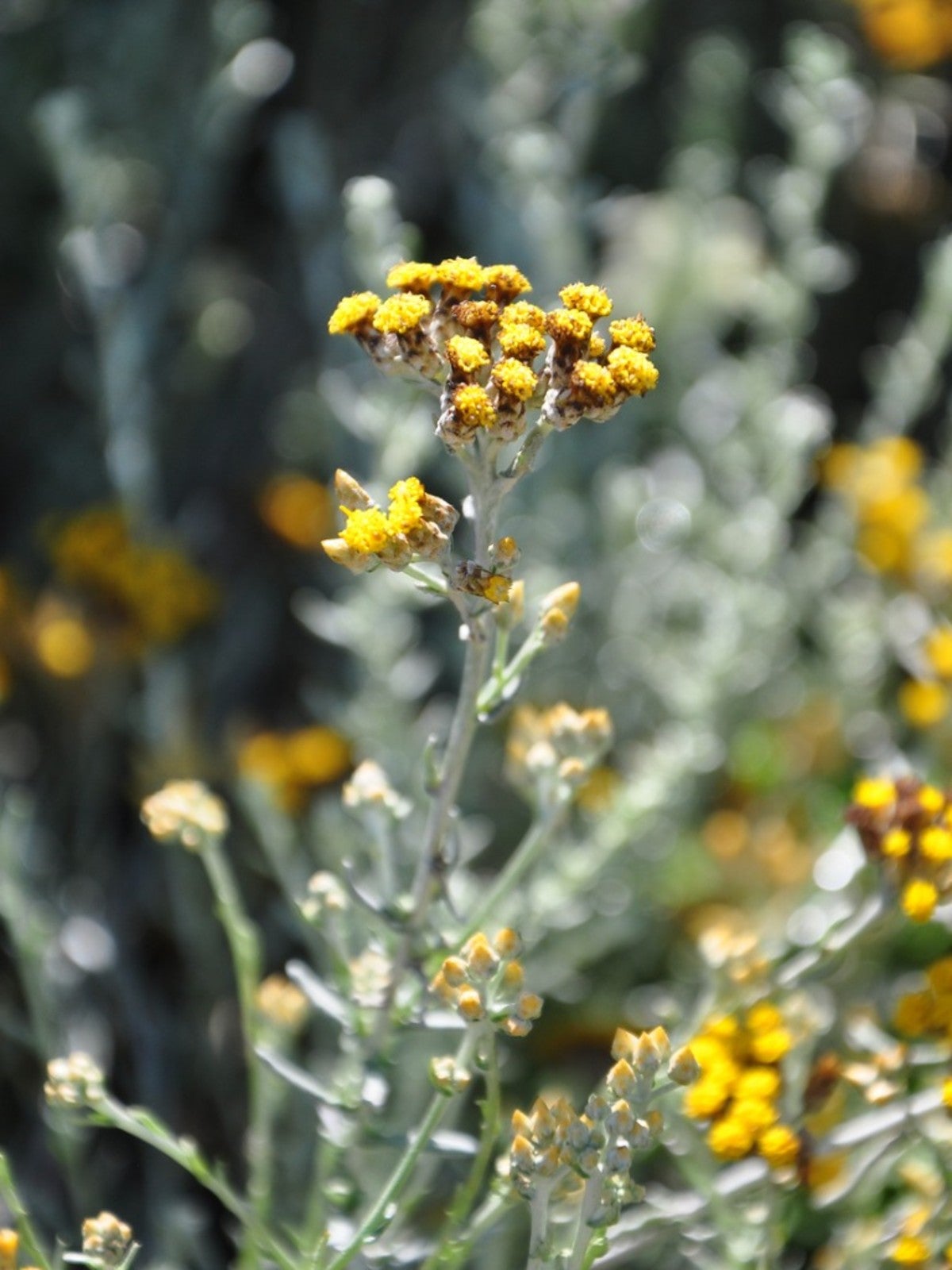What Is Silver Spike Grass - Growing Helichrysum Silver Spike Grass


Native to the Himalayas and the Mediterranean, Helichrysum silver spike grows wild there, and grows readily in dry areas of the U.S. It originates in mountainous areas with harsh weather conditions and may adapt to cold spots as far north as Zone 6. Helichrysum, the botanical name for the plant, means everlasting or immortal in Latin.
What is Silver Spike Grass
Silver spike grass (Helichrysum thianschanicum) is an evergreen perennial subshrub, 19 – 24 inches (48 to 61 cm.) in height with a width to 36 inches (91 cm.) It is a member of the daisy family. More than 600 specimens are related to this attractive perennial.
Silver spike grass resembles the lavender plant in shape and form, although it is not related. Erect stems and branches with linear 2-inch (5 cm.) long leaves emerge from a tight mound. They are covered by a white pubescence that attracts attention in the landscape and draws the eye. It is also commonly called Curry Plant due to its curry scent.
How to Grow Silver Spike Grass
This perennial plant is heat and drought tolerant, a good specimen for those sunny to dappled sun areas in the landscape. Silver spike grass needs average soil that is well-drained and gritty. Amend the soil with coarse sand, chicken grit, and compost to improve drainage and provide a gritty aspect. As with other drought tolerant plants, a little water will improve the health and appearance of silver spike grass.
Silver spike grass grows mostly as an annual in areas other than Zone 9 and warmer, where it is considered hardy. Wet winters often cause its demise. The still active base of the plant may freeze, and wet soil further encourages the condition of “winter wet.” If your winters are dry, silver spike grass might grow perennially in your area. Some say it is cold hardy as far north as Zone 6.
Yellow, insignificant, button-like flowers appear in summer, adding to the beauty of the grass. Although they are attractive, the grass is normally grown for its silvery blue foliage and savory fragrance.
Medicinal Uses of Helichrysum
Medicinal uses for the attractive landscape plant have been studied, resulting in the development of an essential oil made from its flowers and leaves. The oil is used for a range of problems, from infections to insomnia. (Note: Essential oils are not meant for ingestion. Use them topically or in an immunotherapy situation. Should a rash or redness appear, immediately discontinue use of the oil).
Sign up for the Gardening Know How newsletter today and receive a free copy of our e-book "How to Grow Delicious Tomatoes".
Italy, Portugal and Spain are among the European counties who use the plant in traditional medicine. Aside from preventing infections, it is thought to heal wounds, fight malaria and prevent weight gain. Perfume makers have also utilized the spicy fragrance in several their products.

Becca Badgett was a regular contributor to Gardening Know How for ten years. Co-author of the book How to Grow an EMERGENCY Garden, Becca specializes in succulent and cactus gardening.